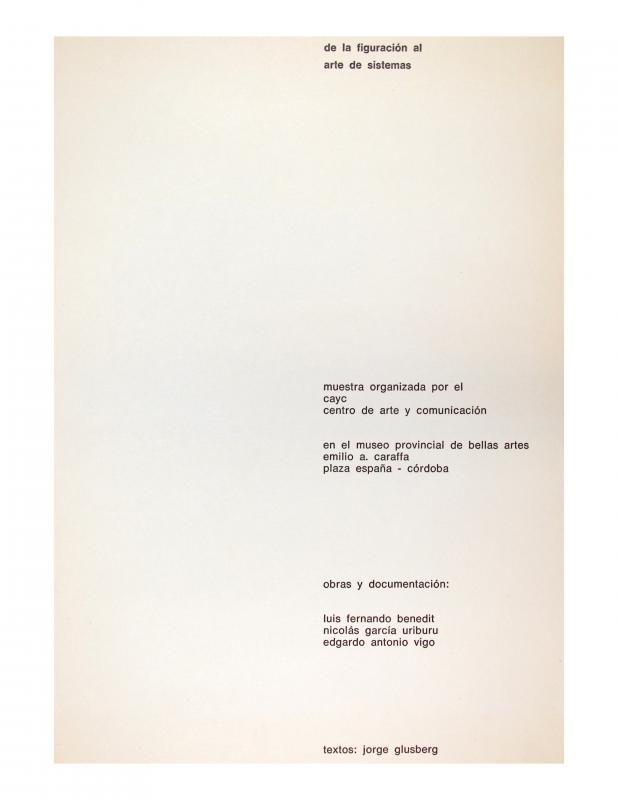Ever since it was founded, the CAYC (Centro de Arte y Comunicación), helmed by the cultural promoter, artist, and businessman Jorge Glusberg, was intended as an interdisciplinary space where an experimental art movement could flourish. The establishment of collaborative networks connecting local and international artists and critics played a key role in this process. The exhibitions shone a light on these exchanges, in which overviews of trends or individual artists introduced the innovations of international contemporary art and made Argentine and Latin American artists better known on the global scene.
When he was getting ready to launch his project, Glusberg took a pretty broad and flexible approach to his use of the term “systems art,” which had originally referred to the Conceptual art practices that were being developed in international art circles at that time. It was, in fact, at the exhibition De la Figuración al Arte de Sistemas (1970) (doc. no. 761141) that he introduced the term to describe a kind of art that, in its initial radical form, “refers to processes rather than to the finished products of good art.”
At the first Arte de Sistemas exhibition, in 1971, at the Museo de Arte Moderno in Buenos Aires, Glusberg defined “arte de sistemas” as an artistic practice that was associated with an understanding of the systems and processes that are used to organize the contemporary world’s experiences. That definition was close to “systems esthetics,” the term coined by the North American critic Jack Burnham in 1968. In time, for various reasons, the term began to apply to quite dissimilar trends or movements, such as art as an idea (or Conceptual art), ecological art, poor art (Arte Povera), cybernetic art, proposal art, and blatantly political art.
When the exhibition was shown in Colombia at the III Bienal de Arte de Coltejer (Medellín, May 1972), Glusberg’s essay in the catalogue made it very clear that, from that point on, the term “systems art” would mean something different that, in his opinion, would be associated with regional conditions in Latin America. This gradual change in the meaning of the term—from a process of assimilation or appropriation to one that was somehow related to the concept of identity—provided the basis for the CAYC’s strategy for international visibility.
The exhibition to be shown at the IAC (Instituto de Arte Contemporáneo) in Lima had been described—[see the ICAA Digital Archive, GT-119 (doc. no. 1476406)]—as a presentation of the same works that had been shown in Buenos Aires and Medellín. But this list of the works shown in Peru differs considerably from the ones in the catalogues for the other two events.


